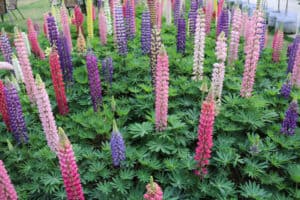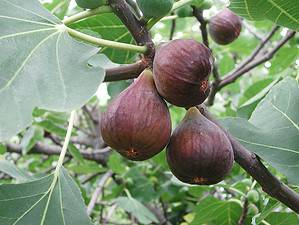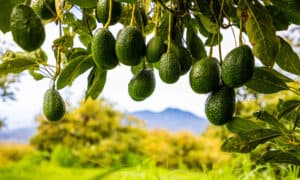Florida is a butterfly paradise, with over 180 species that call the state home. In addition, 40 butterfly species are endemic to Florida, which means you won’t find them anywhere else in the world! Adult butterflies love the sweet nectar of flowers, but baby caterpillars (larvae) are much pickier about what they eat. So, to make your garden a butterfly haven, you’ll want to plant the right flowers for both Here are the 23 best plants and flowers for attracting butterflies in Florida!
1. Buttonbush (Cephalanthus occidentalis)

Buttonbushes prefer full sun to partial shade.
©passion4nature/ via Getty Images
Perfect for wet areas, buttonbushes are native to Florida and attract all kinds of butterflies and birds. They grow as shrubs or small trees, usually 5 to 12 feet tall, and bloom from March to August. Buttonbush blossoms are small and round, filled with tiny, densely packed flowers that look like puffballs.
2. Firebush (Hamelia patens)
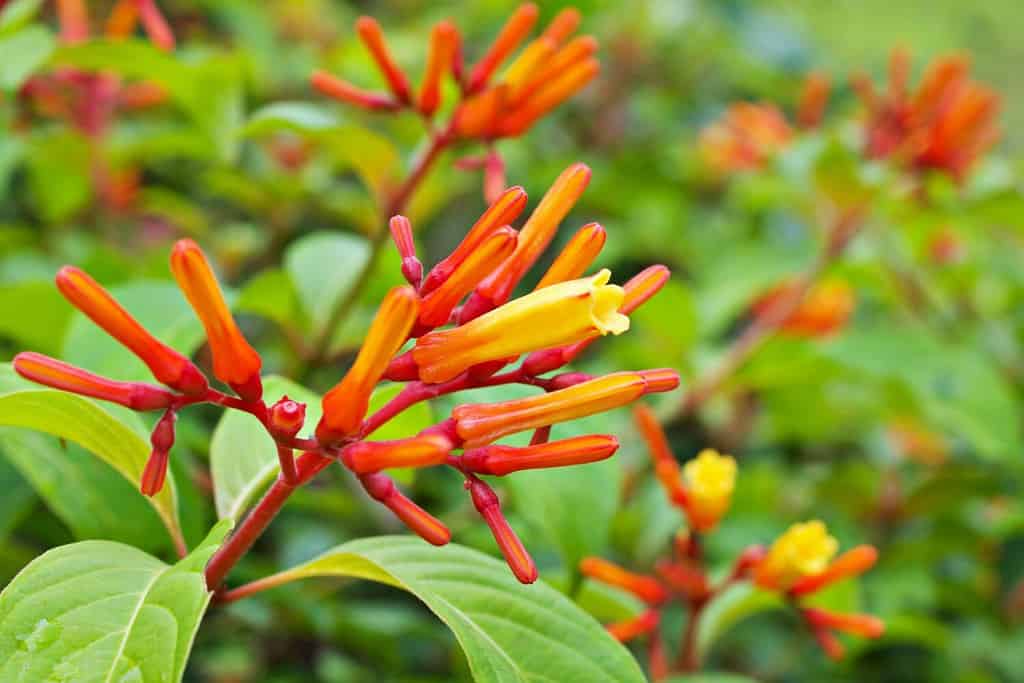
Firebushes are drought and heat-tolerant.
©Little daisy/Shutterstock.com
One of the best plants for attracting butterflies from late spring until the first frost is the firebush. This beautiful shrub produces vibrant red tubular flowers that many butterflies adore, including the gulf fritillary (Agraulis vanillae) and zebra longwing (Heliconius charithonia).
3. Florida Paintbrush (Carphephorus corymbosus)
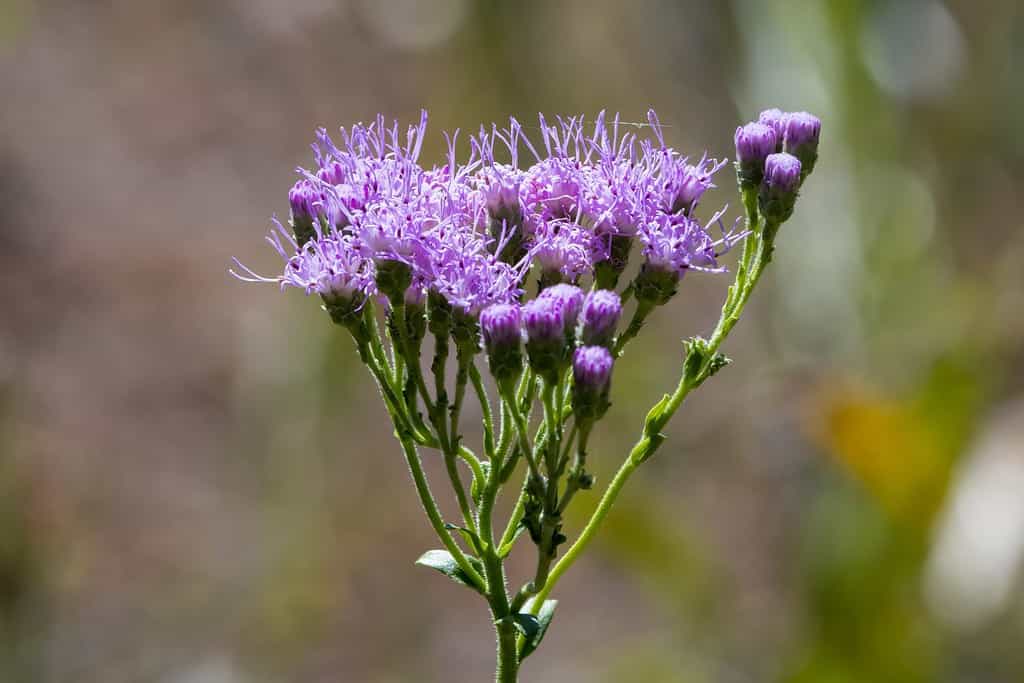
Florida paintbrush flowers can grow up to 3 feet tall.
©DrWD40/Shutterstock.com
These fun flowers are excellent for attracting butterflies in Florida. They bloom from the late summer into the fall with bright pink or lavender puff ball-like flowers. Florida paintbrush plants do best in full sun to minimal shade.
4. Blanket Flower (Gallardia pulchella)
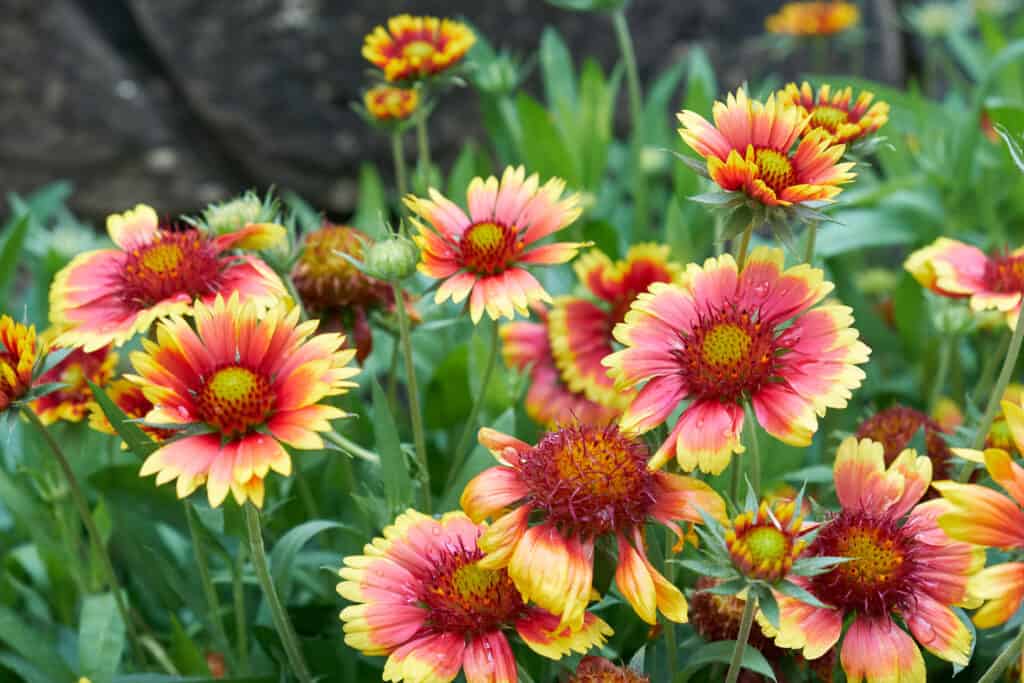
Blanket flowers grow well along coastlines.
©iStock.com/Iseo Yang
Growing 12 to 24 inches tall, blanket flowers are stunning plants with red, orange, and yellow blossoms. These bright flowers bloom throughout the summer and into fall, providing plenty of color and food for butterflies.
5. Dotted Horsemint (Monarda punctate)
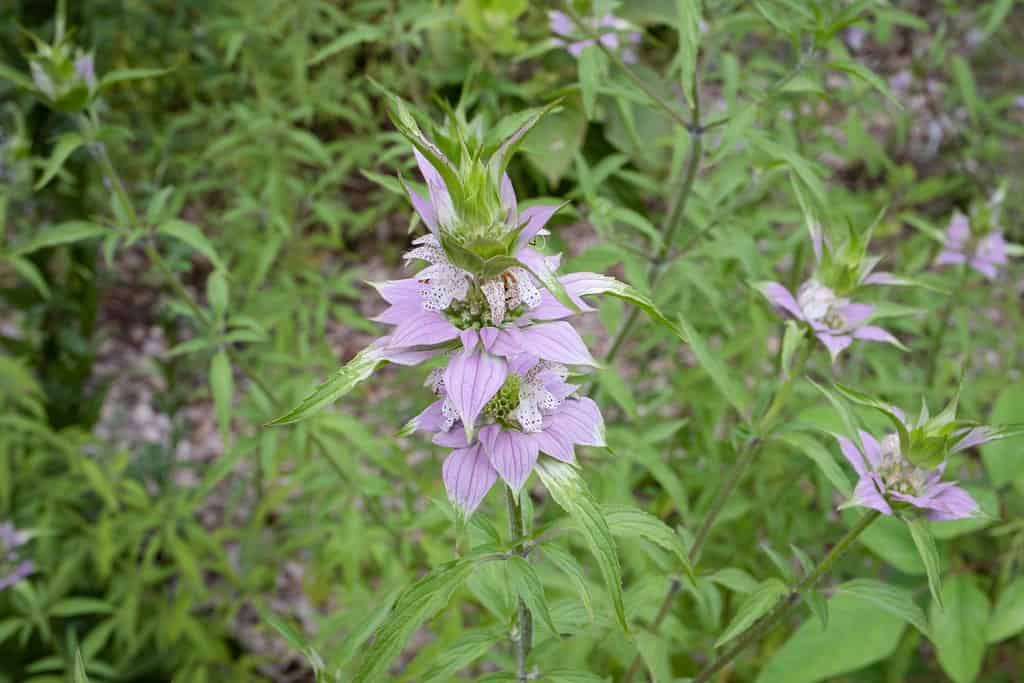
Horsemint grows 2 to 5 feet tall.
©DrWD40/Shutterstock.com
Also known as spotted bee balm, dotted horsemint is a fragrant wildflower in Florida that attracts butterflies. It blooms in pinkish-purplish hues in the late spring through the fall. Dotted horsemint flowers are small with purple spots, but their larger pink and lavender bracts look like flower petals.
6. Fogfruit (Phyla nodiflora)
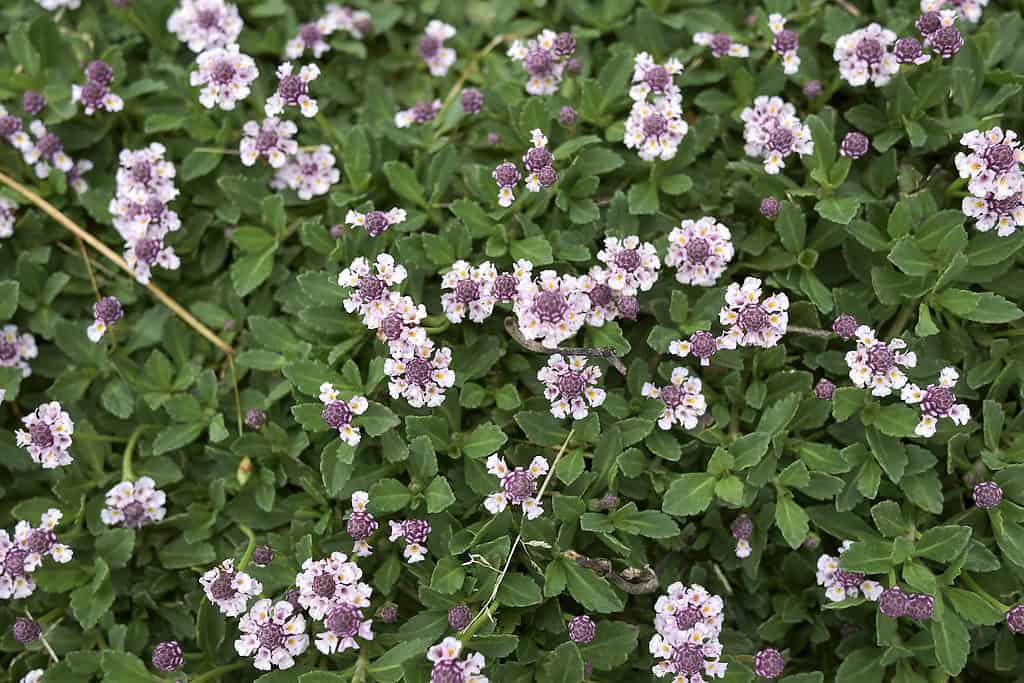
Butterflies like Miami blue, field skipper, and barred yellow love fogfruit.
©iStock.com/seven75
Fogfruit is a low-growing perennial that blooms all year long with white and purple flowers. This is an excellent plant for attracting butterflies in Florida, both for adults and caterpillars. It is also a larval host for common buckeye (Junonia coenia), white peacock (Anartia jatropha), and phaon crescent (Phyciodes phaon) caterpillars.
7. Black-Eyed Susan (Rudbeckia hirta)

Black-eyed Susans are hardy flowers.
©LauraTabor/iStock via Getty Images
One of the best flowers for attracting butterflies in Florida is the black-eyed Susan. These bright and cheery wildflowers grow everywhere in Florida. They have long, yellow petals with a dark, domed center. Black-eyed Susans are native to Florida and prefer full sun to minimal shade.
8. White Wild Indigo (Baptisia alba)
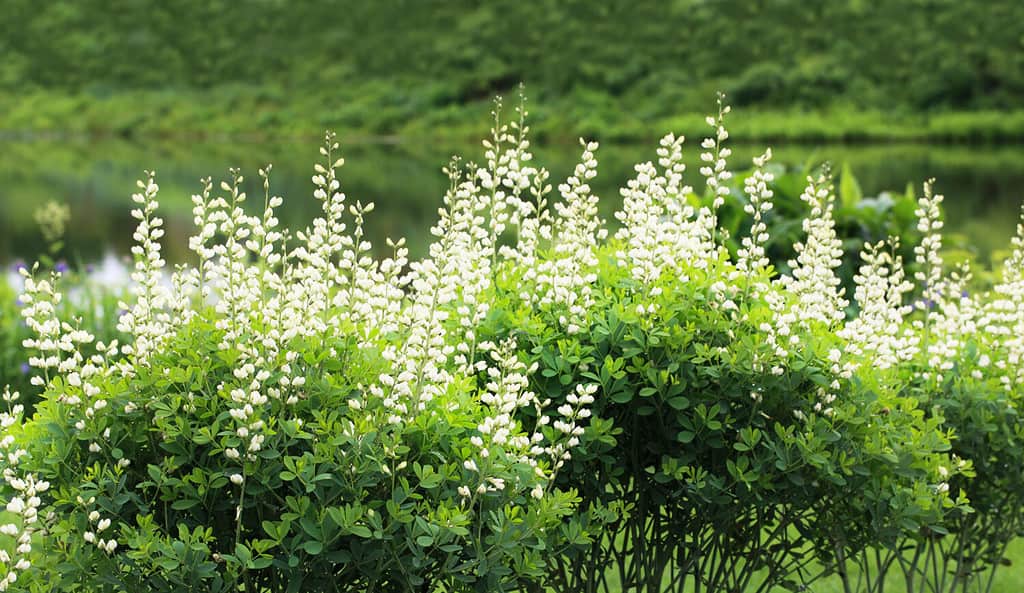
Growing 2 to 5 feet tall, white wild indigo blooms from March through May in Florida.
©Le Do/Shutterstock.com
The white wild indigo flower attracts butterflies in Florida with its beautiful, white blooms. This plant is also a larval host for wild indigo duskywing (Erynnis baptisiae) and zarucco duskywing (Erynnis zarucco) caterpillars.
9. Partridge Pea (Chamaecrista fasciculata)
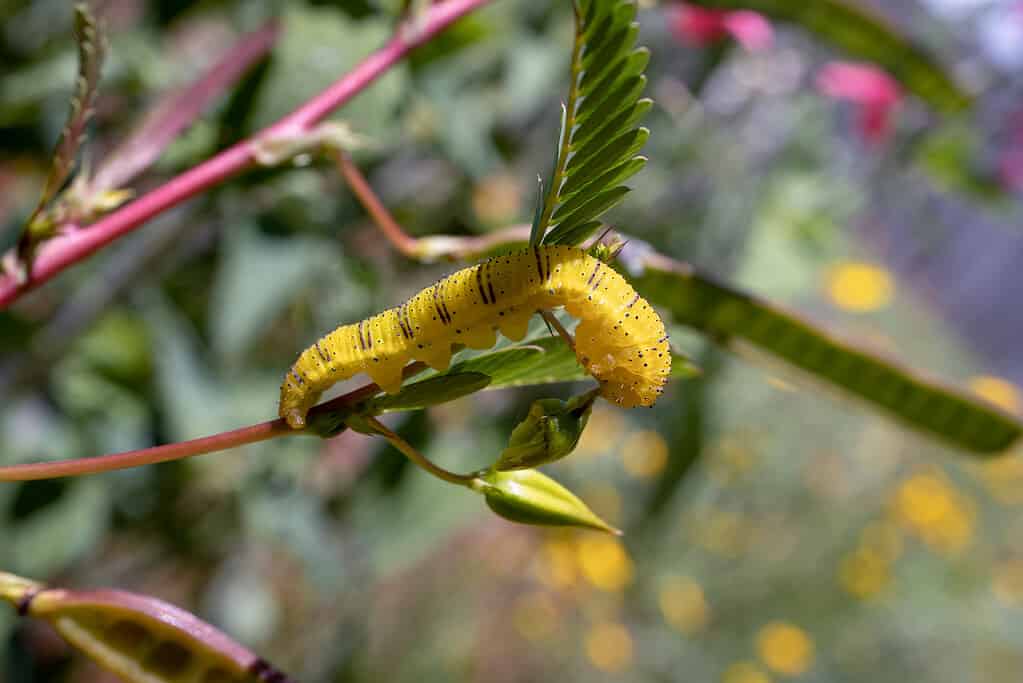
Cloudless sulphur caterpillars feed off of partridge pea plants.
©DrWD40/ via Getty Images
The cute yellow flowers of the partridge pea plant bloom from late spring through late fall. Partridge pea plants serve as host plants for many different caterpillar species, including the gray hairstreak (Strymon melinus) and sleepy orange (Abaeis nicippe) butterflies.
10. Purple Passionflower (Passiflora incarnate)
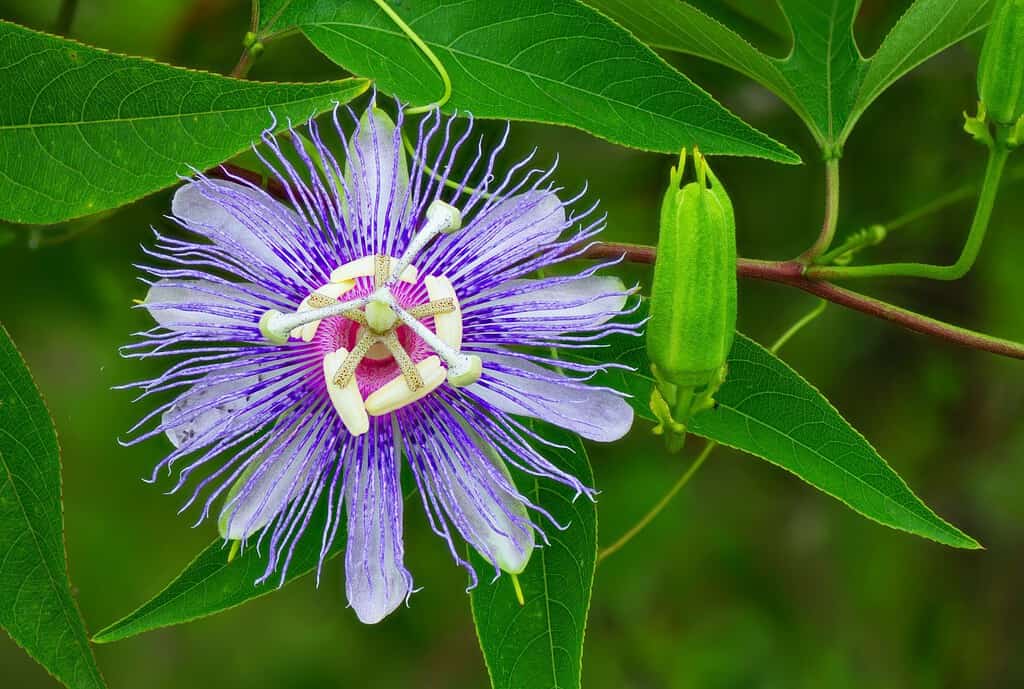
Many fritillary caterpillars eat passionflower plants.
©Chase D'animulls/Shutterstock.com
Purple passionflowers are perennial vines native to Florida. Butterflies love these unique flowers, and the plants also provide food for various caterpillars like the variegated fritillary (Euptoieta claudia), Gulf fritillary (Agraulis vanillae), and zebra longwing (Heliconius charithonia).
11. Blazing Star (Liatris)
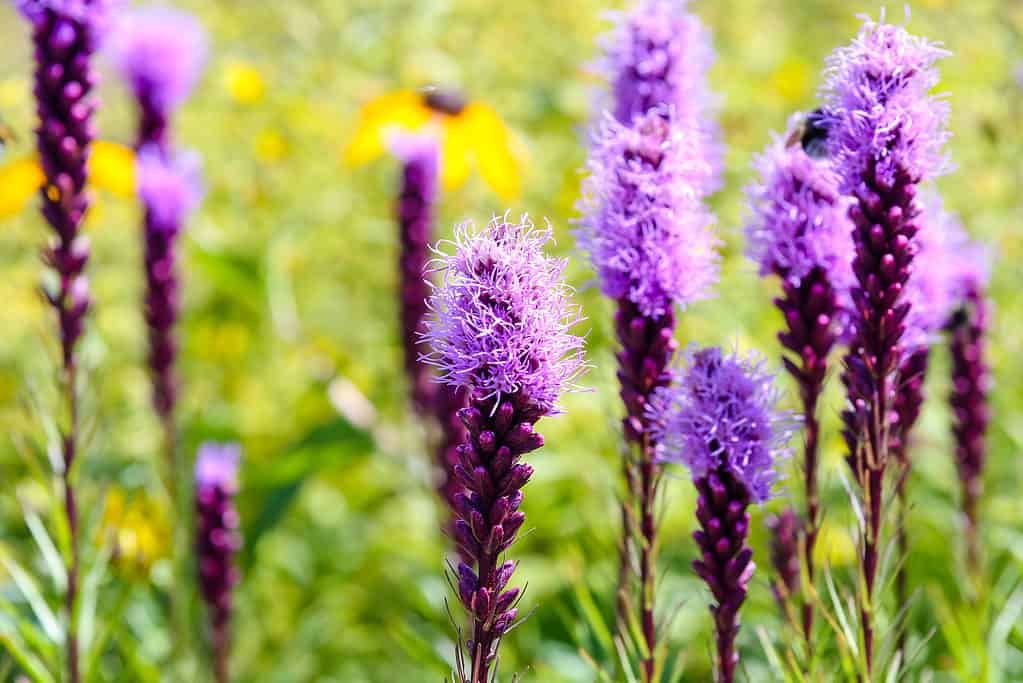
Blazing stars are tough and adaptable plants.
©iStock.com/todamo
Liatris or blazing stars are stunning perennials that produce vertical purple flowers in the late summer and fall. Four species of blazing star flowers are endemic and only live in Florida. Blazing star flowers are pink and purple and grow on tall spikes.
12. Sweet Bay Magnolia (Magnolia virginiana)
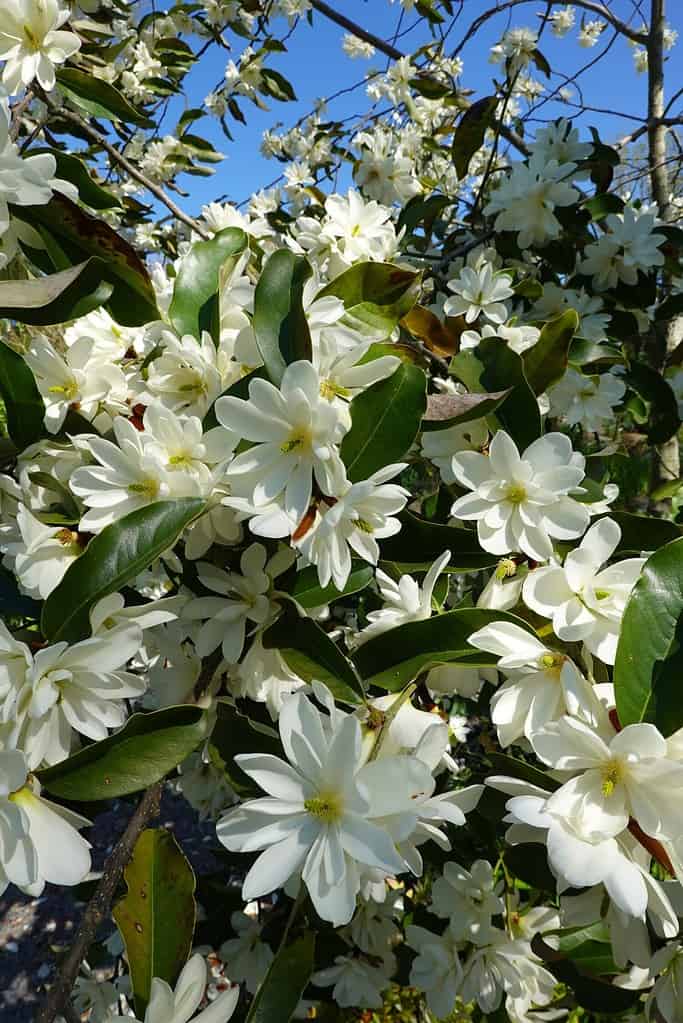
Sweet bay magnolias are long-living trees.
©LifeisticAC/Shutterstock.com
If you’re looking for a beautiful tree that attracts butterflies in Florida, look no further than the sweet bay magnolia. These elegant, white-barked trees have large, fragrant flowers that pollinators love. Sweet bay magnolias are a favorite of the eastern tiger swallowtail (Papilio glaucus), providing food for the caterpillars.
13. Sage (Salvia)
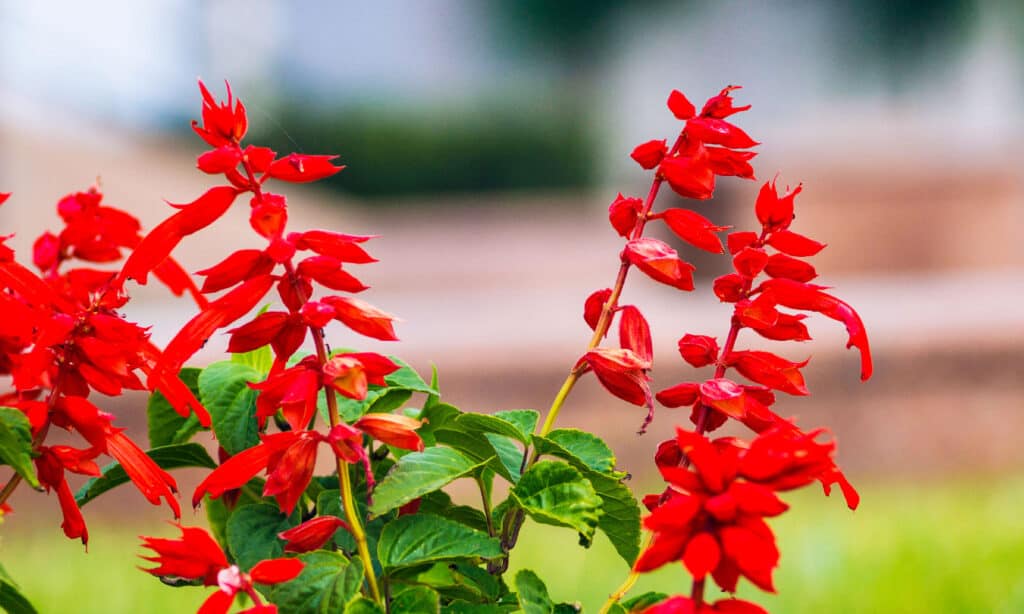
Scarlet sage can have red, white, or pink flowers.
©iStock.com/Bastetamn
There are hundreds of different types of sage or salvia plants that are perfect for attracting butterflies in Florida. These unique flowers are lobed and tubular and come in many beautiful including purple, blue, red, pink, orange, and yellow.
14. Sunflowers (Helianthus)
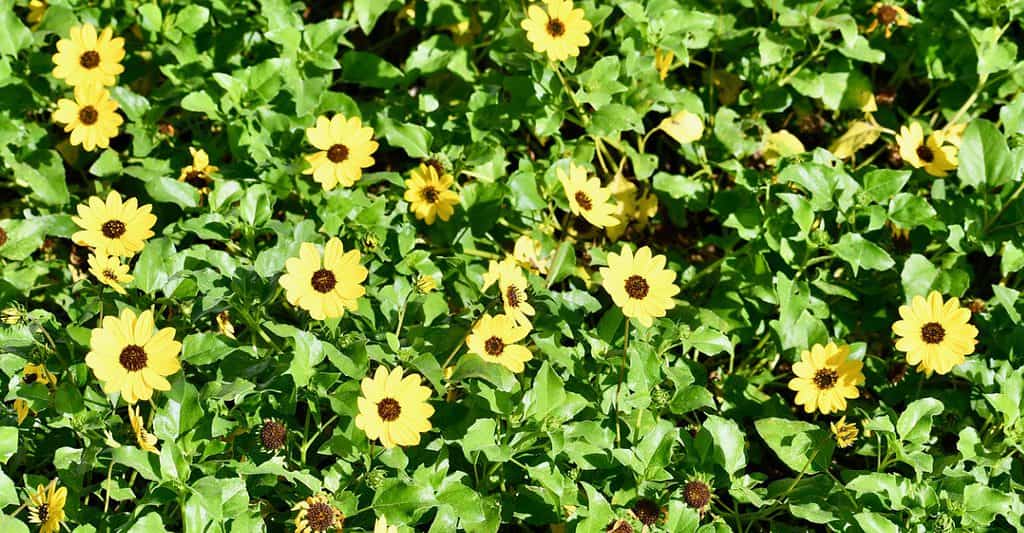
Dune sunflowers are sometimes called beach sunflowers.
©iStock.com/MarieTDebs
There are many different types of sunflowers in Florida that attract butterflies. Lakeside sunflowers (Helianthus carnosus) are endemic to Northeast Florida and grow up to 3 feet tall, while dune sunflowers (Helianthus debilis) attract butterflies along the coast.
15. Goldenrod (Solidago)
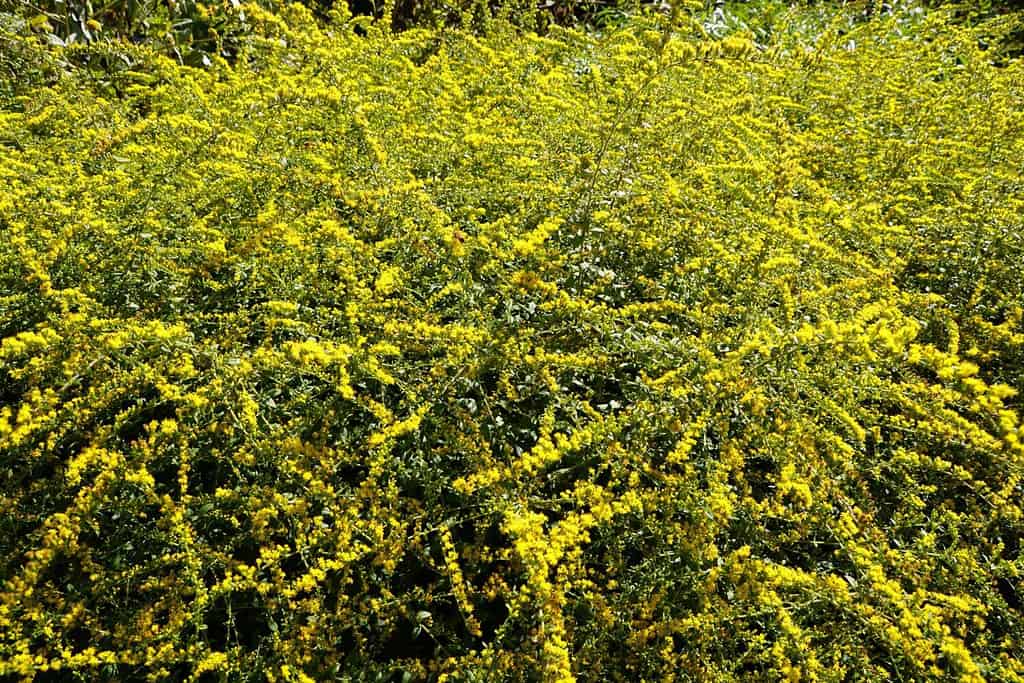
Goldenrod flowers are in the aster family.
©Khairil Azhar Junos/Shutterstock.com
To attract Florida butterflies in the fall, plant some beautiful goldenrod flowers. These showy plants produce bright yellow flowers and are an excellent source of nectar for pollinators like butterflies. Florida is home to at least 22 different native goldenrod species.
16. Milkweed (Asclepias)
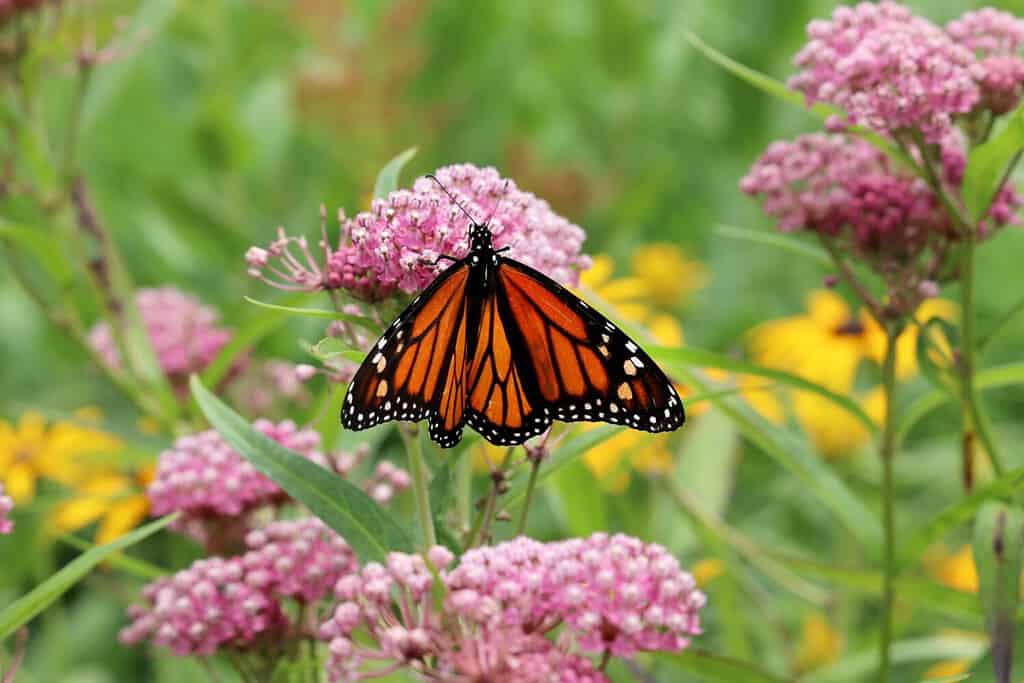
Swamp milkweed has pink flowers.
©Nancy J. Ondra/Shutterstock.com
Milkweed is the ultimate plant for attracting monarch butterflies in Florida — it is the only plant that monarch caterpillars eat! Queen and soldier caterpillars also eat the leaves of milkweed plants. Butterfly weed (Asclepias tuberosa) is one of the most popular, producing orange flowers from late summer through early fall. Many other native species also produce red, white, yellow, and pink flowers.
17. Butterfly Bush (Senna bicapsularis)
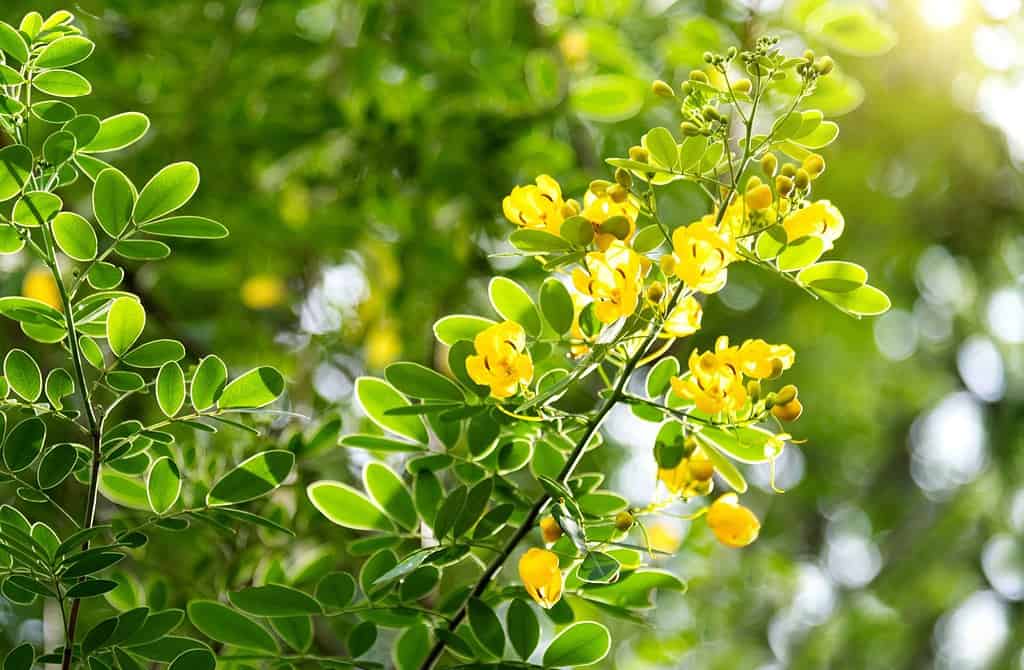
Butterfly bushes are native to South America.
©hxdbzxy/Shutterstock.com
The cassia or butterfly bush is a semi-evergreen shrub that grows 8 to 10 feet tall. Butterfly bushes produce bright yellow flowers and are perfect for attracting butterflies in Florida in the fall. They are also a host plant for cloudless sulphur butterflies (Phoebis sennae).
18. Pipevine (Aristolochia)
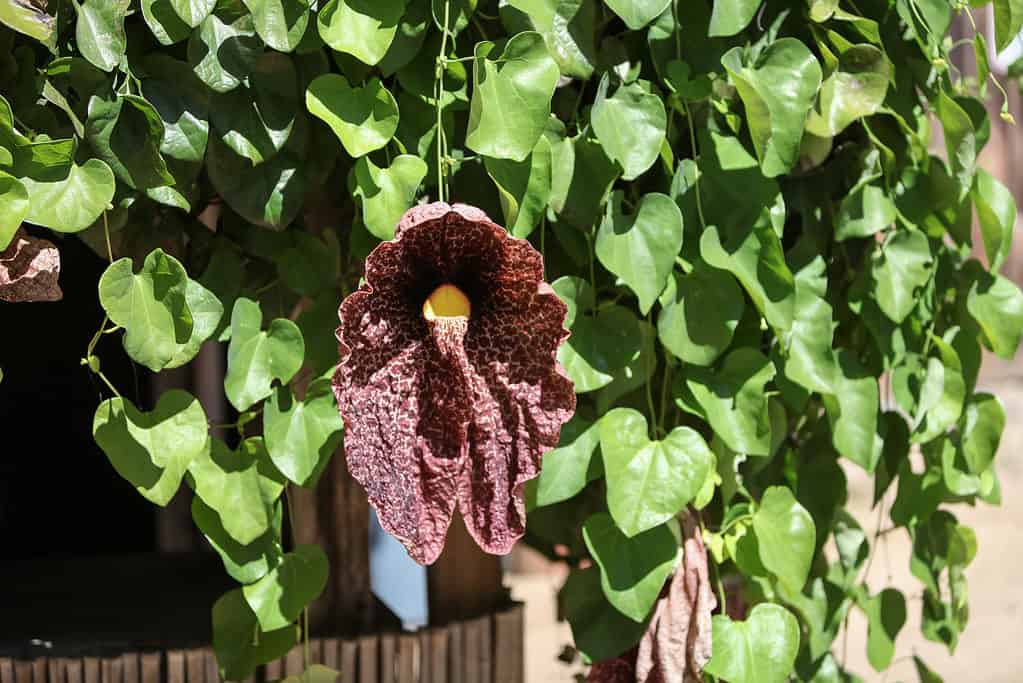
Dutchman’s pipe does best in partial shade.
©iStock.com/LagunaticPhoto
Polydamus (Battus polydamus) and pipevine swallowtail (Battus philenor) butterflies feed on pipevine plants from the genus Aristolochia, like woolly Dutchman’s pipe (Aristolochia tomentosa). However, elegant Dutchman’s pipe (Aristolochia elegans) is a non-native plant and harmful to pipevine swallowtailcaterpillars.
19. Black Cherry (Prunus serotina)
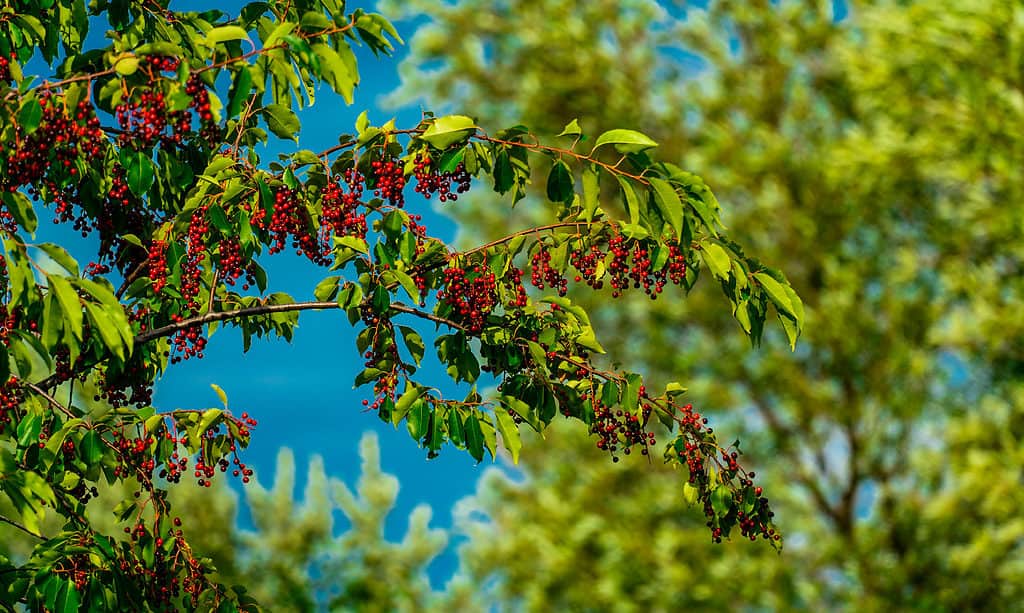
Birds enjoy the small berries of black cherry trees.
©iStock.com/TeleMakro Fotografie (Ina Hensel)
Black cherry trees provide food for both the adults and caterpillars of red-spotted purple (Limenitis arthemis) and tiger swallowtail (Papilio glaucus) butterflies. These tall trees can grow up to 70 feet and produce small white flowers. In the spring and summer, black cherry trees have shiny, dark green leaves that transition to yellow and red in the fall.
20. Carolina Willow (Salix caroliniana)
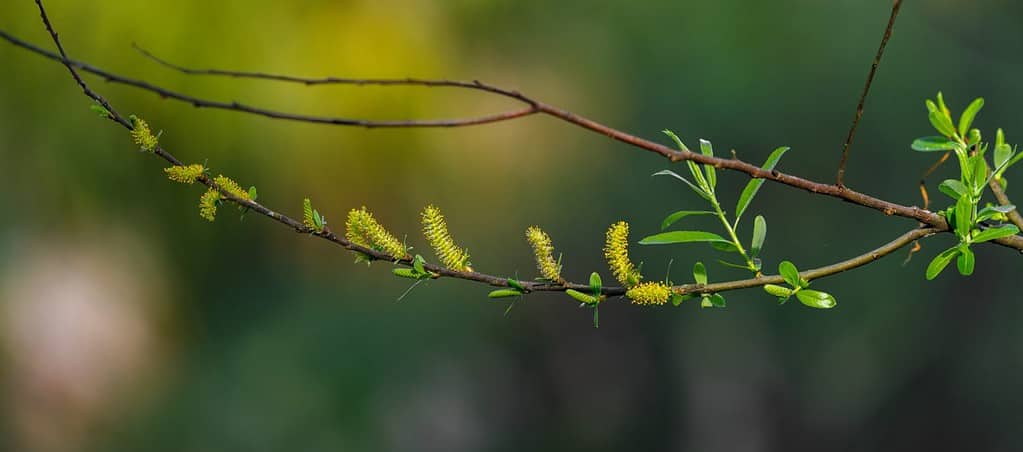
Carolina willows are also called swamp willows.
©Chase D'animulls/Shutterstock.com
Another host plant for the red-spotted purple butterfly (Limenitis arthemis) is the Carolina willow. These trees grow 25 to 60 feet tall and produce showy yellow flowers. They also provide food for viceroy caterpillars (Basilarchia archippus).
- https://commons.wikimedia.org/wiki/File:Vaccinium_stamineum_1.jpg
21. Deerberry (Vaccinium stamineum)
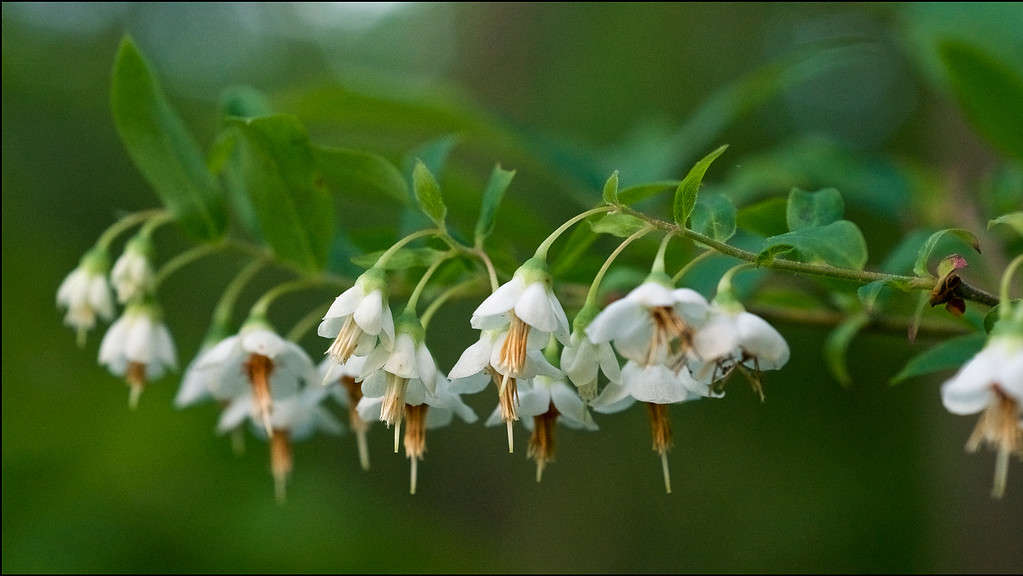
Deerberries are native to eastern North America.
©Eric Hunt / CC BY-SA 4.0, via Wikimedia Commons - License
Growing 6 to 12 feet tall, deerberry shrubs produce tiny white flowers that attract butterflies and other pollinators in Florida. In addition, the plant’s blue-green leaves turn stunning shades of red or purple in the fall. Deerberry plants do best in full to partial sun.
22. Yellow Thistle (Cirsium horridulum)
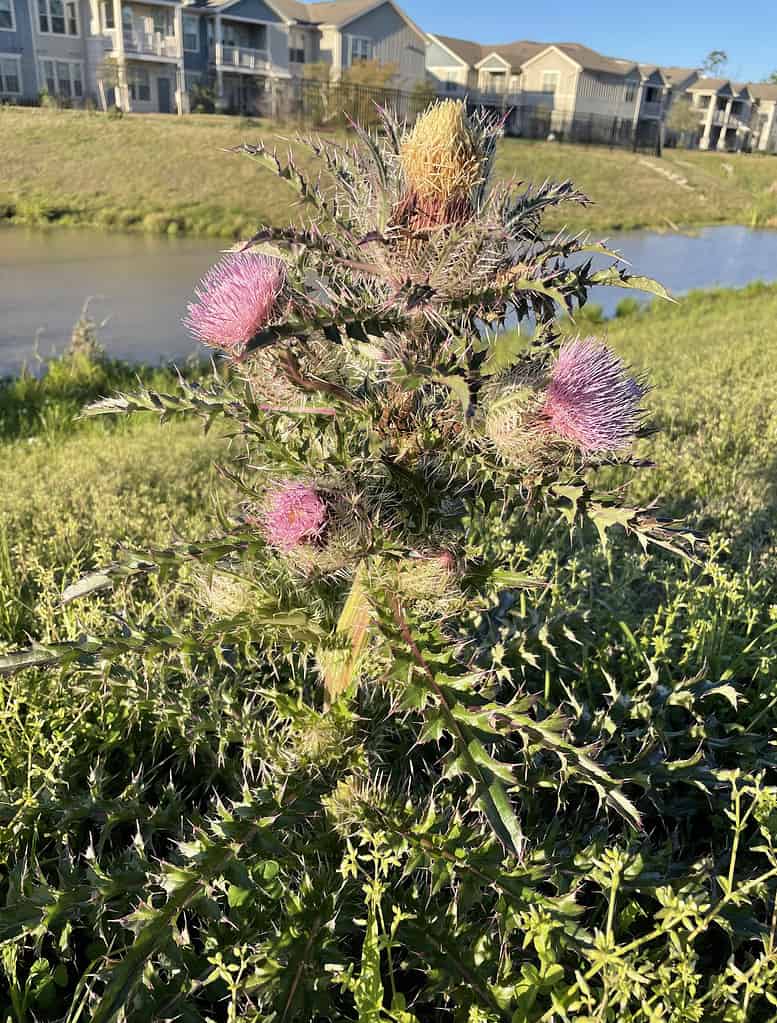
Both bumblebees and butterflies love yellow thistles.
©Bladner32 / CC BY-SA 4.0, via Wikimedia Commons - License
Blooming in the spring, yellow thistle grows 1 to 4 feet tall with prickly purple, yellow, pink, or white flowers. Yellow thistles are host plants for little metalmark (Calepheis viriniensis) and painted lady (Vanessa cardui) butterflies.
23. Water Hyssop (Bacopa monnieri)
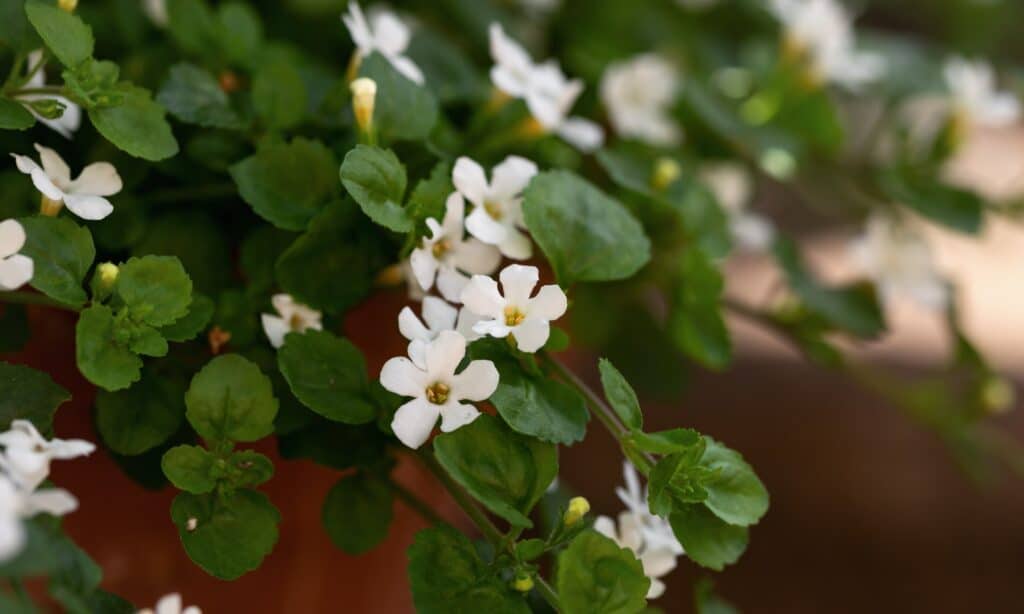
Water hyssop plants produce delicate white or pink blossoms.
©iStock.com/Maksims Grigorjevs
Low-growing plants, water hyssops do well in wet areas like swamps, marshes, and the edges of lakes and streams. They are also larval host plants for white peacock caterpillars (Anartia jatropha).
The photo featured at the top of this post is © iStock.com/ktreffinger
Thank you for reading! Have some feedback for us? Contact the AZ Animals editorial team.



